Last year, Professor Salvators Babones warned that Australia’s universities have become overly reliant on international student fees, which accounted for around one quarter of university revenue in 2017:
…between 2012 and 2017, roughly two-thirds of Australian universities’ increase in total revenue was “driven by increased international student fees,” according to the Australian Department of Higher Education and Training (DET), with the remaining growth due to increases in Commonwealth financial assistance. In 2017, international student fee revenue accounted for 23.3% of the higher education sector’s total revenue, up from just 16.3% in 2013 when international students were already a prominent presence on Australian campuses…
Babones showed that the concentration of international students at Australia’s universities dwarfs all other developed nations, with a per capita intake that is roughly 2.5 times the UK’s and three times Canada’s:
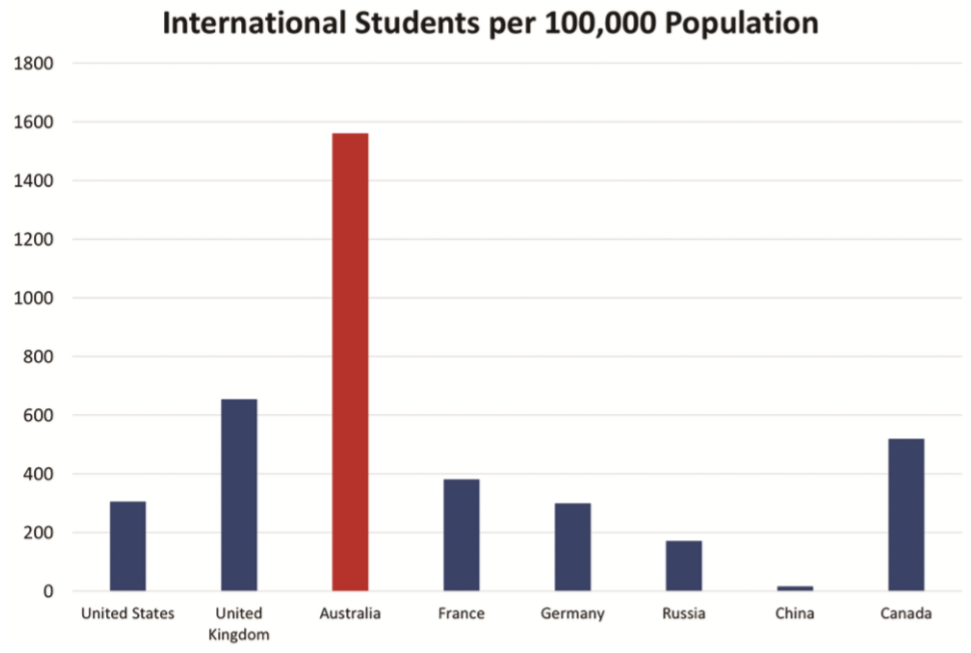
Australia’s international student revenue is particularly dependent on China, which comprised 11% of total Australian university enrolments in 2017, well above all other developed nations:
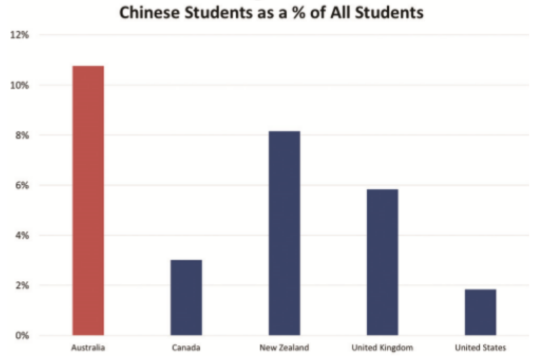
Chinese students make up around 40% of total international student tuition fees, since they tend to enrol in more expensive courses than students from other nations.
Salvatore Babones’ report also identified seven universities with “extraordinary levels” of exposure to Chinese students, namely the University of Melbourne, Australian National University (ANU), University of Sydney, University of New South Wales (UNSW), University of Technology Sydney (UTS), University of Adelaide and University of Queensland (UQ):
“At all seven, Chinese students seem to account for more than 50% of all international students…
In 2017, they relied on Chinese student course fees for anywhere from 13% (Adelaide and ANU) to 22-23% (UNSW and Sydney) of their total revenues…
All seven have higher proportions of international and Chinese students than any university in the entire United States.”
More recent data shows that Australia’s reliance on international students, and China in particular, has grown even further.
Total international student enrolments across all Australian education sectors surpassed 900,000 for the first time in 2019:
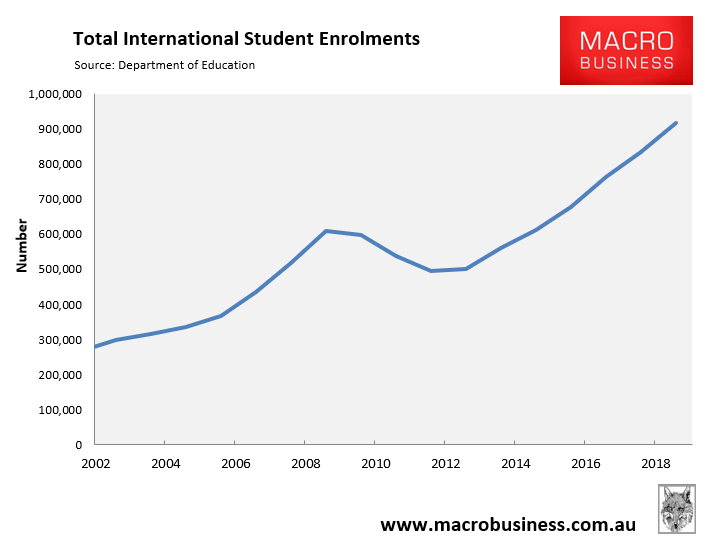
And China accounted for just under 255,000 of these enrolments, roughly double second-placed India and four times third-placed Nepal:
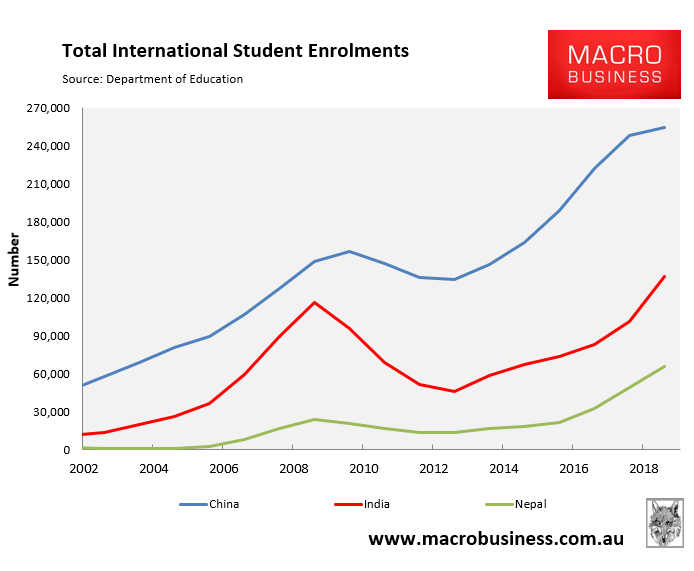
The same goes for international student ‘exports’, with China accounting for $12.1 billion of Australia’s total $37.6 billion education exports in 2019, dwarfing both India ($5.5 billion) and Nepal ($2.6 billion):
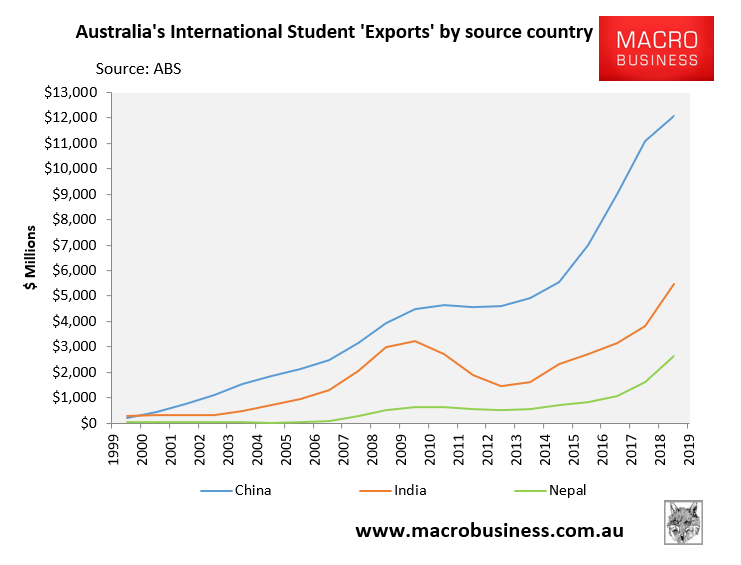
Now there are growing concerns that the coronavirus could cause mass cancellations of Chinese enrolments in Australia, thus putting university finances at grave risk:
Australia’s universities, over-reliant for the past decade on billions of dollars in tuition fees from Chinese students, are anxiously awaiting the arrival of students ahead of their so-called census dates…
The census date is the date after which students are liable to start paying fees, when their grades will be recorded and the course will remain on their transcripts. If students withdraw before this, they are not liable to pay any fees, no grades are recorded and the course is removed from their transcripts.
Students are also entitled to get any deposits back if they withdraw before census date; most universities require one term’s worth of fees from international students.
Census dates vary by institution and course, but are usually around March 31 for domestic students. For international students, the date is often the start date of the course.
Tertiary education industry insiders said that the sector has been closely watching the situation in China since institutions were advised of potential pandemic from the Wuhan coronavirus in early January…
The Chinese government has said infection rates are accelerating.
In a worrying sign, China’s Ministry of Education has already cancelled all English-language proficiency exams scheduled for February in a bid to contain the outbreak.
Thus, end-March is looking like a key date to watch. If the coronavirus spreads, Australia’s education industry could be facing a year of pain as the great Chinese student bubble finally bursts.

